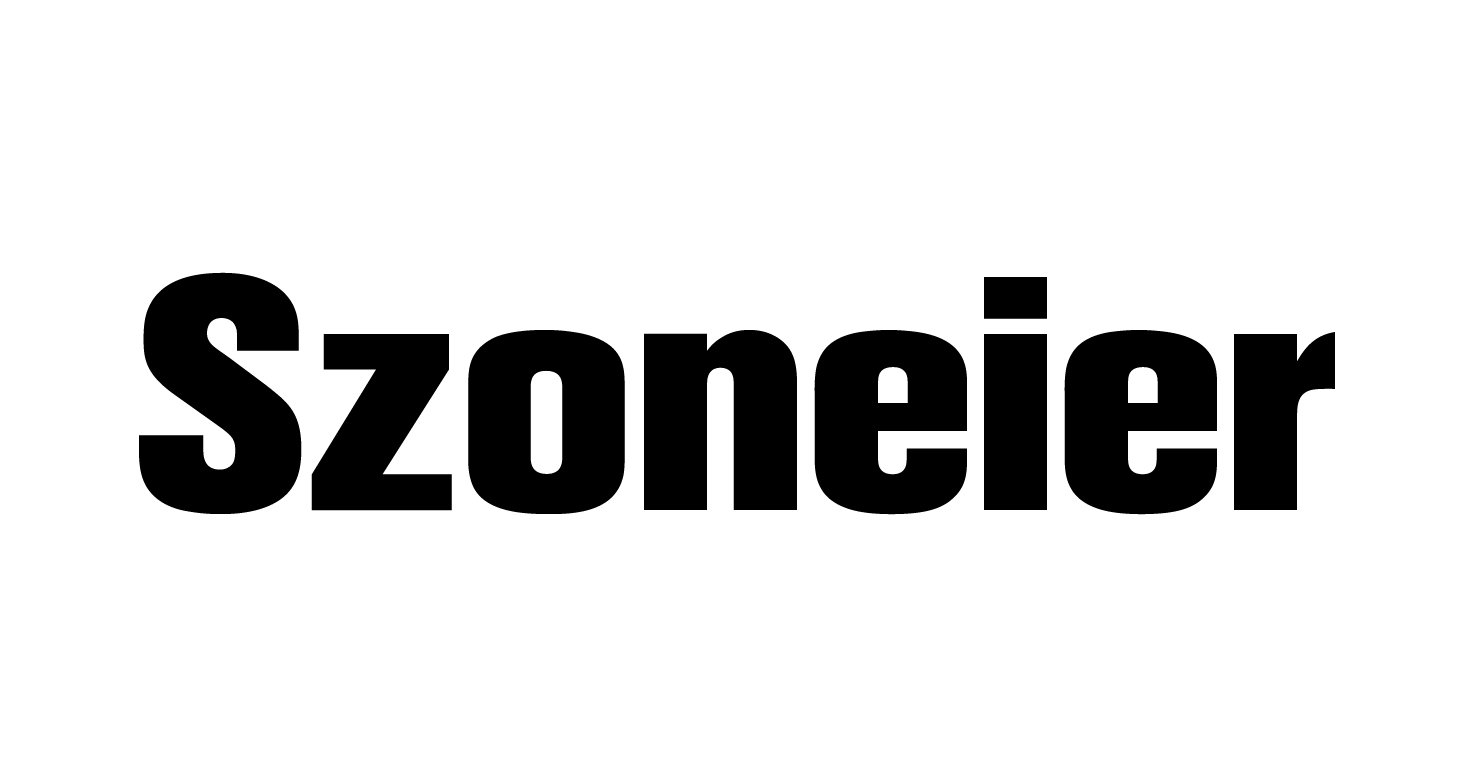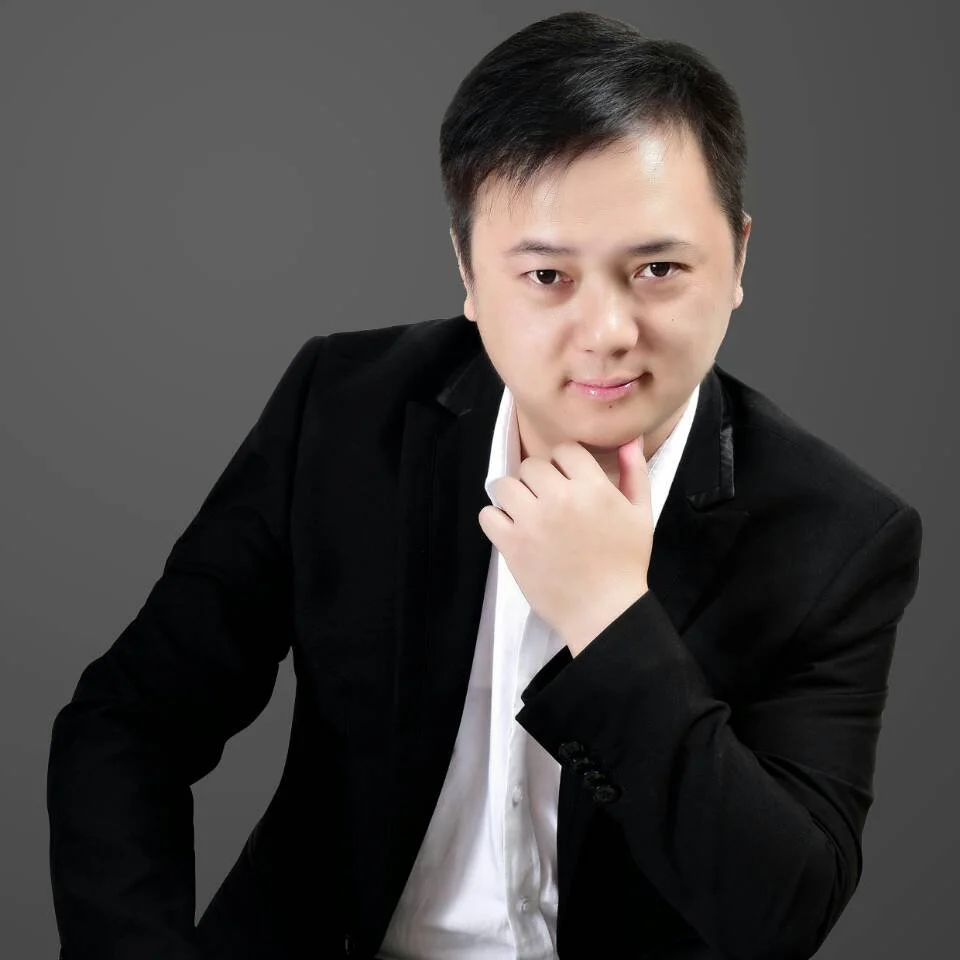Linen has long held a reputation as one of the most luxurious and environmentally friendly natural textiles in the market. Its exceptional tensile strength, moisture-wicking capability, and unique aesthetic appeal position it as a top choice for high-performance and premium textile products—ranging from fashion to upholstery to industrial applications.
At its core, linen is made from the fibers of the flax plant. It requires fewer chemical inputs compared to cotton, consumes significantly less water, and biodegrades more efficiently, which places it at the forefront of the sustainable textile movement. In a world where traceability and eco-footprint matter more than ever, linen delivers both on functional performance and brand values.
Linen is valued globally for its strength, breathability, sustainability, and timeless aesthetic. Its production involves minimal water and chemicals, making it ideal for eco-conscious textile sourcing.
What’s more compelling is the consumer trend data. According to a 2024 survey by Textile Exchange, over 38% of luxury apparel brands have incorporated linen into their spring-summer lines, citing a 23% uptick in consumer demand for natural, breathable fabrics. From fashion-forward designs in Milan to minimalist home textiles in Scandinavia, linen is no longer niche—it’s mainstream with premium positioning.
Let’s break this down further through a short anecdote. In 2023, a boutique hotel chain in the Mediterranean redesigned its entire bedding and lounge textiles in 100% Belgian linen. Guests repeatedly praised the comfort and breathability, and the hotel even reduced laundering energy costs by 15% due to linen’s faster drying times. This speaks volumes not only about customer satisfaction but also operational ROI—making linen an all-around high-value material.
What are the top countries producing linen in 2025?
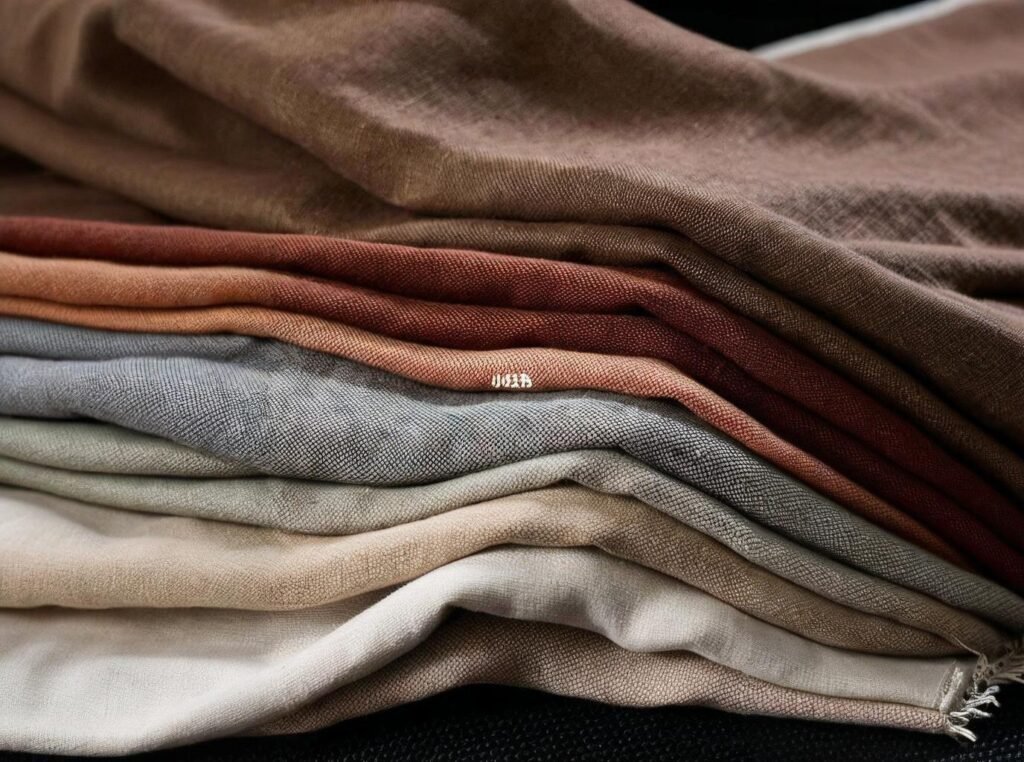
France may still be the global flax heavyweight in 2025, but the linen sourcing map has diversified. Buyers are now balancing luxury quality from Europe with efficiency and pricing from Asia. Understanding which country matches your sourcing goals—whether it’s price, lead time, sustainability, or certification—is crucial for making the right supplier decision.
France, Belgium, Lithuania, China, and India are the top global sources of linen in 2025—each offering distinct advantages in quality, price point, eco-compliance, and speed of delivery.
Global Landscape: Key Linen Supplier Countries Compared
A. Comparative Overview of Linen Sourcing by Country
Here’s a breakdown comparing core performance indicators of the top 5 linen supplier countries in 2025:
| Country | Flax Cultivation Quality | Processing & Finish | Certifications Available | FOB Price Range (USD/kg) | Lead Time | Typical MOQ (meters) |
|---|---|---|---|---|---|---|
| France | ★★★★★ (Long-staple) | Ultra Premium | GOTS, EUROPEAN FLAX® | $6.80–$12.00 | 45–60 days | 200–300 |
| Belgium | ★★★★★ | Luxury Finish | OEKO-TEX®, GOTS | $7.50–$13.50 | 60–70 days | 150–250 |
| Lithuania | ★★★★☆ | High-Grade EU Standards | OEKO-TEX®, GOTS | $6.00–$10.50 | 35–50 days | 300+ |
| China | ★★★☆☆ | Mid to High | ISO 9001, REACH, GRS | $3.20–$6.50 | 20–35 days | 500+ |
| India | ★★☆☆☆ | Mid-Range + Blends | GOTS, BCI, SEDEX | $3.00–$5.80 | 25–40 days | 400–500 |
B. France: Benchmark for Pure Linen Excellence
No country rivals France in flax farming. Northern France, especially Normandy and Picardy, provides optimal rainfall and soil for flax, allowing fibers to grow longer and stronger—ideal for high-count weaving and soft finishes.
- French mills emphasize artisanal finishing with minimal chemical inputs, making them a top choice for high-end clothing, home textiles, and sustainable brands.
- According to CELC (European Confederation of Flax and Hemp), France supplies over 80% of global scutched flax fiber, much of which is shipped to Belgium or Lithuania for further processing.
Case Insight: A Danish luxury bedding company sourcing exclusively from Normandy linen mills reported a 23% increase in EU retail conversions after showcasing “EUROPEAN FLAX® certified” labeling.
C. Belgium: Boutique Processing, Designer Reputation
Though Belgium doesn’t farm as much flax as France, it’s often the next step in the value chain—home to Europe’s finest linen processors.
- Belgian linen finishing is revered for its high thread count, advanced yarn spinning, and chemical-free bleaching. Many fabrics undergo enzyme washing and stone finishing, making them exceptionally soft and drapable.
- Brands focused on luxury apparel, drapery, and upholstery rely on Belgian mills for their ability to deliver consistent hand feel across large orders.
Pro Insight: A New York fashion label shifted from Indian linen to Belgian-processed flax and noticed a 30% decrease in returns related to shrinkage and dye inconsistencies.
D. Lithuania: EU Regulations, Better Turnaround
Lithuania has cemented itself as a fast-moving EU alternative. While it doesn’t grow flax at the scale of France, Lithuanian mills import high-quality fibers from nearby farms and offer excellent responsiveness.
- Turnaround time is faster, and costs are ~15–20% lower than France or Belgium for comparable grades.
- Most Lithuanian mills are vertically integrated, managing spinning, weaving, finishing, and even private-label packaging under one roof.
Environmental Scorecard: Over 70% of Lithuanian mills are powered by renewable energy, and a large percentage comply with ZDHC (Zero Discharge of Hazardous Chemicals) protocols.
E. China: Agile, Scalable, and Improving in Quality
China dominates the volume-driven linen segment, exporting millions of meters annually to fashion brands, homeware manufacturers, and uniform producers.
- While Chinese flax is generally shorter-staple and less lustrous than European grades, the country makes up for it with agility, innovation, and massive capacity.
- Many suppliers now offer enzyme-washed, yarn-dyed, and coated linen fabrics and have adopted REACH and OEKO-TEX® Standard 100 compliance.
Client Story: A Canadian lifestyle brand partnered with a mill in Shandong for a line of garment-washed linen shirts. They saved 38% on costs vs. European suppliers while maintaining a 4.6+ star average on customer reviews.
F. India: Affordable Blends and Rapid Development
India is making waves in the budget-to-midrange linen blend market. Though it lacks large-scale flax farms, it excels in blending linen with cotton, viscose, or modal to create lightweight fabrics for tropical markets.
- Mills in Surat and Tamil Nadu are now investing in European flax imports to develop purer linen lines with eco-friendly finishes.
- SEDEX, GOTS, and BCI certifications are common among India’s top-tier exporters.
Use Case: A Berlin-based children’s clothing brand sourced linen-modal blends from India and benefited from low fabric cost, fast printing options, and flexible 200-meter MOQs.
G. Summary Table: Who Should Source Where?
| Sourcing Goal | Recommended Country |
|---|---|
| Luxury fashion or bedding | France, Belgium |
| Fast turnaround, mid-tier quality | Lithuania, China |
| Low MOQ or budget accessories | India, China |
| Organic certification priority | France, Lithuania |
| Linen blends with tropical feel | India |
Which types of linen fabrics are available for wholesale buyers?
Choosing the right linen fabric is more than just picking a texture—it’s about aligning the weave, weight, and blend with the intended application and end-user expectations. Wholesale linen offerings in 2025 are increasingly specialized, with more finish treatments, functional coatings, and low-MOQ blending options than ever before.
Wholesale linen fabrics now range from lightweight plain weaves to durable linen-canvas, with blended and finished variants tailored for apparel, interior décor, accessories, and even technical textiles.
Understanding the Types of Linen Fabric
A. Side-by-Side Comparison of Common Linen Fabric Types
This table outlines the key linen fabrics used across industries, highlighting performance characteristics important for sourcing decisions:
| Fabric Type | Weave Structure | GSM Range | Common End Uses | Popular Blend Options |
|---|---|---|---|---|
| Plain Weave | 1:1 Balanced Crisscross | 120–180 | Shirts, dresses, summer blouses | 100% Linen, Cotton-Linen |
| Twill | Diagonal rib pattern | 180–250 | Coats, pants, chef jackets | Linen-Viscose, Linen-Wool |
| Linen Gauze | Loose open weave | 80–130 | Scarves, overlays, soft drapes | 100% Linen |
| Herringbone | Broken twill (zigzag) | 200–320 | Cushion covers, curtains | Linen-Cotton, 100% Linen |
| Canvas Linen | Tight heavy plain weave | 300–450 | Tote bags, workwear, cushions | Linen-Poly, Linen-PP |
| Slub Linen | Irregular yarn texture | 140–220 | Fashion, soft furnishings | Cotton-Linen, Modal-Linen |
B. How Weave Structures Influence Application
Weave pattern dictates not only the surface look but also mechanical properties like stretch, durability, and wrinkle resistance.
- Plain weave linen is ideal for airy summerwear. It has a strong grid-like formation that provides decent tensile strength even in lighter weights.
- Twill linen offers a subtle sheen and better wrinkle recovery, making it popular in menswear and uniforms.
- Herringbone weaves bring a textured, heritage feel with added structural stability—excellent for heavier soft furnishings.
Buyer Tip: Use plain weave below 150 GSM for clothing and twill above 200 GSM for form-holding garments or uniforms.
C. GSM Benchmarks: Don’t Just Touch—Measure
GSM (grams per square meter) is your objective metric to assess fabric density. Here’s a breakdown of use cases by GSM:
| GSM Range | Application Fit | Example Products |
|---|---|---|
| 80–130 GSM | Breathable wearables | Scarves, lingerie, summer shirts |
| 130–180 GSM | General apparel | Blouses, dresses, casual pants |
| 180–250 GSM | Semi-structured use | Skirts, trousers, light jackets |
| 250–350 GSM | Heavy-duty textiles | Aprons, curtains, bags |
| 350–450 GSM | Industrial & upholstery | Cushions, slipcovers, luggage |
A buyer for a UK-based homeware startup found their 220 GSM herringbone weave too light for bench cushions—reinforcing why GSM must match functional expectations, not just visual or tactile ones.
D. Blended Linens: Smart Trade-Offs for Price and Function
Pure linen offers unmatched breathability, but it’s not always wrinkle-resistant or cost-efficient. That’s where blends shine:
- Linen-Cotton (60/40): Softer hand feel and improved durability
- Linen-Viscose (70/30): Enhanced drape, suitable for dresses and tunics
- Linen-Polyester: Boosts wrinkle resistance and colorfastness for hotel uniforms or tote bags
- Linen-Wool: Niche use in cooler climates—adds warmth without sacrificing structure
Quality Control Note: Blended linens should come with fiber composition reports (e.g. ISO 1833) and shrinkage data post-wash. Sourcing without this data increases return risk by up to 15% in consumer markets, especially with linen-viscose mixes.
E. Value-Added Finishes That Are Game-Changers
Modern linen isn’t just raw and rustic anymore. Today’s wholesale suppliers are offering a wide range of specialty treatments that upgrade both function and finish:
| Finish Type | Benefit | Common Uses |
|---|---|---|
| Enzyme Wash | Softer hand, vintage look | Shirts, napkins, baby wear |
| Stone Wash | Subtle distressing, premium touch | Lounge wear, bedding |
| Pigment Dye | Muted tone, fashion appeal | Blazers, dresses |
| Water-Repellent Coating | Surface protection | Outdoor cushions, bags |
| Flame Retardant (FR) | Safety for commercial interiors | Hotel curtains, restaurant upholstery |
Stat Insight: According to a 2024 European home textiles report, products with certified FR-treated linen saw a 37% higher resale price in hospitality sourcing platforms.
F. MOQ Considerations: Low-Volume Access Grows
Unlike five years ago, you no longer need to commit to 1000+ meters to access variety. Many mills now accept:
- 150 m MOQ for standard plain weave linen (pre-dyed)
- 200 m MOQ for herringbone or slub weaves
- 300 m MOQ for blends or enzyme-washed twills
SzoneierFabrics, for instance, offers free lab dips and cut-length sampling even for 100-meter MOQ orders, allowing design brands or capsule-line creators to experiment without heavy upfront investment.
How Does Pricing Vary Across Supplier Countries and Fabric Types?
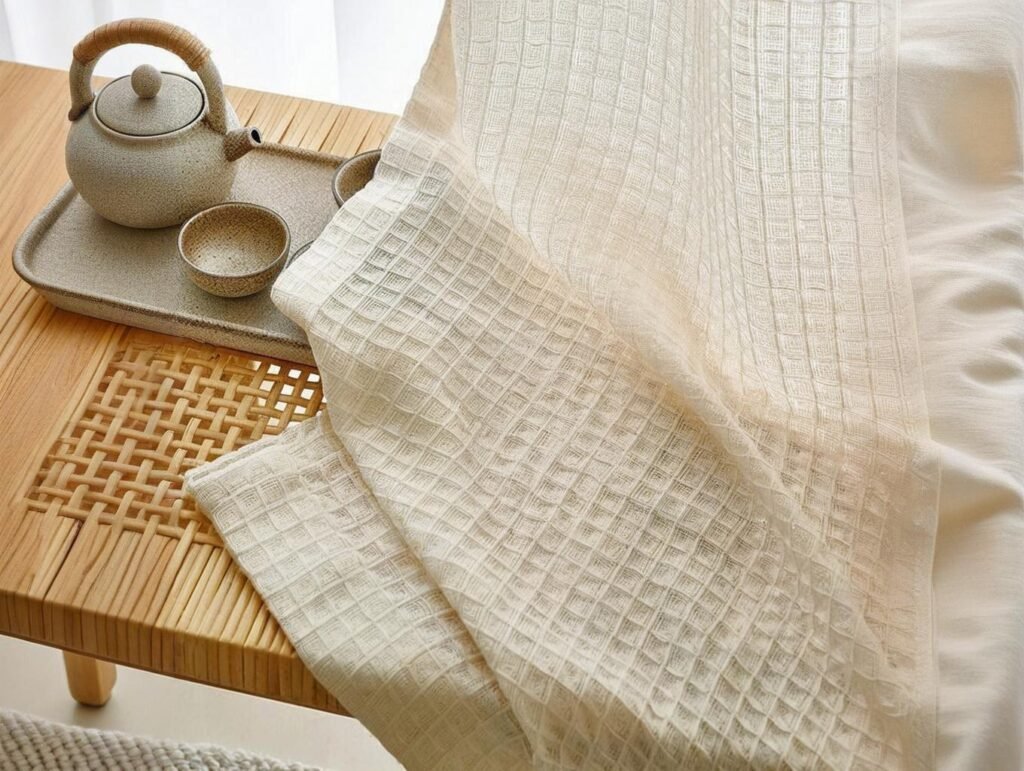
When sourcing linen fabrics in 2025, price differentials aren’t just about origin—they’re about the interplay between raw flax yields, labor efficiency, environmental compliance, machine technology, and global logistics. Buyers who treat pricing as a multi-variable equation—not just a number on a quote sheet—are far more likely to achieve optimal cost-to-value ratios across their product lines.
In 2025, wholesale linen fabric prices range from as low as $3/kg for entry-level blends from India to over $13.50/kg for finished premium Belgian canvas. Total cost is shaped by origin, weave complexity, certifications, treatments, and freight dynamics.
Factors Influencing Linen Pricing Globally
A. Average FOB Pricing by Country and Fabric Type
The table below reflects current FOB (Free on Board) pricing for 500m MOQ orders from major supplier countries:
| Country | Basic Plain Linen | Twill/Herringbone | Heavy Canvas Linen | Finished & Dyed Linen |
|---|---|---|---|---|
| France | $7.50 – $9.00 | $9.50 – $11.00 | $11.50 – $12.50 | $10.50 – $13.00 |
| Belgium | $8.50 – $9.80 | $10.00 – $12.50 | $12.00 – $13.50 | $11.00 – $13.50 |
| Lithuania | $6.00 – $7.50 | $8.00 – $9.50 | $9.50 – $10.50 | $9.00 – $11.00 |
| China | $3.50 – $5.00 | $5.00 – $6.80 | $6.00 – $7.20 | $5.80 – $8.50 |
| India | $3.00 – $4.50 | $4.50 – $5.80 | $5.20 – $6.20 | $5.00 – $7.00 |
Important Note: Additional charges for finishes (stone wash, flame-retardant coating, pigment dye, etc.) typically add $0.80–$2.50 per kg depending on chemical use, wash cycles, and MOQs.
B. Breakdown by Fabric Type and Cost Drivers
Understanding the underlying contributors to cost helps buyers negotiate better and prevent overpaying for unnecessary features.
| Fabric Type | Avg. Cost (USD/kg) | Primary Cost Drivers |
|---|---|---|
| Plain Weave | $3.00 – $9.00 | Flax fiber grade, warp count, spinning quality |
| Twill Weave | $4.50 – $12.50 | Extended loom time, higher yarn density |
| Linen Gauze | $3.20 – $8.00 | Yarn fragility, waste ratio during weaving |
| Canvas Linen | $5.50 – $13.50 | Higher GSM, denser warp/weft, extra sizing chemicals |
| Blends (Cotton, Viscose) | $3.00 – $7.00 | Blend ratio, secondary fiber price, color matching |
Example: A 250 GSM plain weave linen from China may cost $4.80/kg, while a 180 GSM Belgian twill may fetch $11.20/kg—but the latter could offer double the durability and a higher resale value.
C. Certifications Add Real Value—And Real Cost
Ethical and traceability certifications are no longer optional for many Western markets. But they’re not free:
| Certification | Adds Cost (%) | Why It Matters |
|---|---|---|
| EUROPEAN FLAX® | +6–8% | Flax origin traceability |
| GOTS | +8–12% | Organic farming, processing transparency |
| OEKO-TEX® Standard 100 | +5–10% | Tested for harmful substances |
| BCI (Better Cotton Initiative) | +4–7% | Responsible cotton use in blends |
Stat Insight: A 2024 German retail survey found that linens labeled with both GOTS and OEKO-TEX® achieved 19% higher shelf pricing on average compared to non-certified counterparts.
D. Freight, Duties, and Landed Cost Realities
Even if FOB prices look attractive, landed cost can flip the equation.
- France to U.S. East Coast: Avg. sea freight = $1.25/kg; duty = 12.2%
- China to U.S. West Coast: Avg. sea freight = $0.80/kg; duty = 7.8%
- India to EU (Rotterdam): Avg. freight = $1.10/kg; duty = 6.5%
Lead times also matter: Belgian linen can take 70+ days from PO to delivery, whereas China or India often ship in under 40 days—including finishing.
Buyer Tip: For regional brands in Asia-Pacific, sourcing from India or China often reduces landed cost by 15–25%, even for similar fabric types.
E. Case Study: Smart Multi-Sourcing for Margin Protection
In early 2025, a mid-sized Canadian fashion brand began sourcing both fashion-weight twill and accessory-grade plain weave linen:
- Twill (190 GSM, garment dyed): Sourced from Lithuania at $9.20/kg
- Plain weave (150 GSM, PFD): Sourced from China at $4.60/kg
Despite Lithuania’s higher base cost, the twill’s finish quality reduced garment returns by 28%, improving overall product ROI. Meanwhile, China’s low-MOQ plain weave allowed the brand to experiment with seasonal color palettes—without overstocking.
Lesson: It’s not just unit price—it’s unit performance.
Price benchmarking should never happen in a vacuum. Consider:
- Product lifespan: Better fabrics cost more but sell longer
- Brand value: Certified and soft-finished linens enhance perception
- Lead time pressure: Localized production vs. distant price advantage
- Freight volatility: A $0.40/kg difference on paper can balloon at port
Whether you’re developing an eco-conscious apparel line or outfitting hospitality interiors, price strategy should match your brand’s promise and logistical capacity—not just your budget.
What Certifications and Compliance Standards Are Essential for Linen Sourcing in 2025?
Certifications in 2025 are more than badges of credibility—they are non-negotiable criteria for access to high-value markets and risk-averse buyers. As consumer scrutiny intensifies and global import controls tighten, brands and sourcing managers must treat compliance as both a strategic asset and a defensive shield.
The most critical certifications for linen fabrics today include GOTS, OEKO-TEX® Standard 100, EUROPEAN FLAX®, REACH compliance, ISO 9001, and SA8000. Each addresses a unique aspect of product quality, worker welfare, or environmental safety, and many buyers now insist on multi-certification coverage before issuing purchase orders.
Must-Know Certifications for Linen Buyers
A. Key Linen Fabric Certifications & What They Mean
| Certification | Scope | Buyer Benefit |
|---|---|---|
| GOTS (Global Organic Textile Standard) | Organic farming, textile processing, labor welfare | Guarantees fiber origin, chemical-free processing, and ethical labor |
| OEKO-TEX® Standard 100 | Residual chemical safety, skin contact validation | Ensures product safety for apparel, babywear, and home textiles |
| EUROPEAN FLAX® | European flax origin, sustainability | Traceability of non-GMO flax grown without irrigation or chemicals |
| REACH (EU Regulation) | Chemical substance management | Compliance with 10,000+ restricted substances list for EU entry |
| ISO 9001 | Quality control framework | Auditable process for consistent production quality and defect reduction |
| SA8000 | Global labor rights standard | Assurance that mills treat workers ethically—no child labor, forced labor, or unsafe workspaces |
2024 McKinsey survey data:
62% of Western apparel brands said they would stop working with suppliers lacking third-party certifications, even if pricing was competitive.
B. Strategic Impacts of Each Certification
- GOTS: Requires that every stage in the supply chain (from farm to fiber to finish) is certified. Not all mills qualify. Typical GOTS suppliers are based in India, Turkey, France, and select Chinese provinces (like Jiangsu and Shandong).
- OEKO-TEX® Standard 100: Often easier to acquire than GOTS. It tests for over 300 harmful substances including azo dyes, heavy metals, and formaldehyde. Widely available in Lithuania, China, and India.
- EUROPEAN FLAX®: Exclusive to flax grown in France, Belgium, and the Netherlands. Gaining traction among European fashion houses and high-end homeware brands as a “climate-smart” seal of origin.
- REACH: All fabrics imported into the EU must comply. Key regulated elements include:
- Formaldehyde: Max. 75 mg/kg for textiles in contact with skin
- Phthalates: Banned in childwear textiles
- AZO dyes: Completely banned
- ISO 9001: Ensures your linen batches are consistent in GSM, colorfastness, and shrinkage behavior across orders. Especially critical for long-term programs.
- SA8000: Ethical compliance standard that supports audits in developing countries. Vital for brands selling in Germany (due to the German Supply Chain Due Diligence Act) and the Netherlands.
C. Certification Coverage by Country (2025)
The table below shows typical availability—not every factory in a country holds these, but coverage indicates industry maturity:
| Country | GOTS | OEKO-TEX® | EUROPEAN FLAX® | ISO 9001 | SA8000 | REACH Compliance |
|---|---|---|---|---|---|---|
| France | ✔️ | ✔️ | ✔️ | ✔️ | ✔️ | ✔️ |
| Belgium | ✔️ | ✔️ | ✔️ | ✔️ | ✔️ | ✔️ |
| Lithuania | ✔️ | ✔️ | ❌ | ✔️ | ✔️ | ✔️ |
| China | ✔️ | ✔️ | ❌ | ✔️ | ❌ (partial) | Partial (province-dependent) |
| India | ✔️ | ✔️ | ❌ | ✔️ | ✔️ | Partial |
Note: While China and India have rapidly adopted OEKO-TEX® and ISO frameworks, REACH compliance remains inconsistent, especially with smaller or tier-2 suppliers.
D. Real-World Example: Compliance Failure vs Success
In Q2 2024, a German eco-label brand received a shipment of linen aprons from a Shandong-based supplier. REACH testing at EU customs detected high formaldehyde levels (180 mg/kg)—above the 75 mg/kg legal limit. The entire consignment was denied entry.
Immediate consequences:
- Financial loss: €52,000 in detained goods
- Legal warning from German compliance office
- Online backlash and loss of 3 large B2B contracts
What they changed: The brand switched to a Lithuanian OEKO-TEX® supplier. They now include QR-coded supply chain traceability tags with certification scan access, which—according to their own customer reviews—increased trust and purchase frequency by 17%.
Which Countries Offer the Most Sustainable and Ethical Linen Sourcing Options?
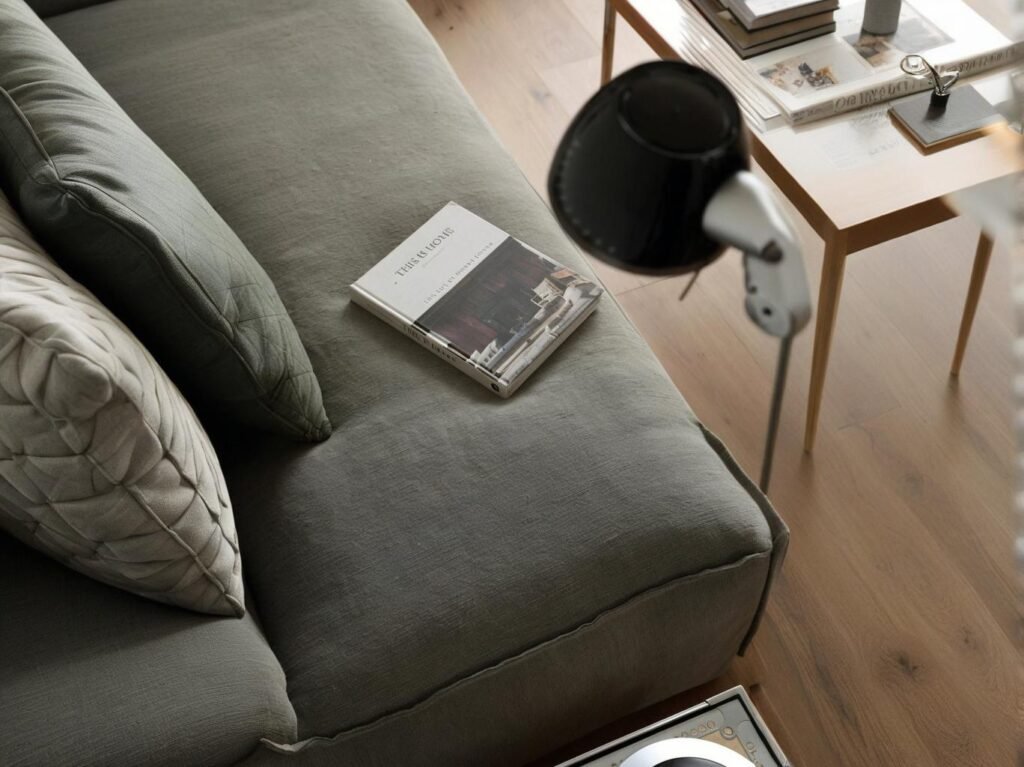
In 2025, sustainability in textile sourcing has moved beyond trend—it is an integrated performance metric influencing investor trust, government policy incentives, and consumer brand loyalty. Buyers are no longer satisfied with vague environmental claims. Instead, they demand measurable impact indicators across farming inputs, processing emissions, energy sourcing, and labor governance.
Among global contenders, France, Belgium, and Lithuania stand out as the most trusted origins for sustainable and ethical linen sourcing. These countries benefit from stringent EU environmental laws, large-scale organic flax farming, high renewable energy use, and labor rights enforcement. For brands targeting eco-conscious markets—particularly in Europe and North America—these origins provide sourcing credibility and long-term brand defensibility.
Evaluating Sustainability and Ethics in Linen Production
A. Sustainability Benchmark by Country
| Country | Organic Flax Farming | Renewable Energy Use | Certified Wastewater Treatment | Traceability Tools |
|---|---|---|---|---|
| France | ✔️ (80% of flax farms GOTS-compliant) | ✔️ (60% hydro + 25% solar in spinning/dyeing mills) | ✔️ (under EU IPPC directive) | Blockchain QR + EU Digital Product Passport (DPP) |
| Belgium | ✔️ (75% farms certified by EUROPEAN FLAX®) | ✔️ (Green mill initiative since 2019) | ✔️ | Encrypted lot-level codes |
| Lithuania | ✔️ (45% of total acreage as of 2024) | Partial (wind, but limited grid access) | ✔️ (EU ERDF-funded projects) | PDF trace docs, manual |
| India | ✔️ (primarily smallholder, non-mechanized) | ❌ (90% coal-fueled plants in textile zones) | Partial (urban areas only) | Basic paper trail |
| China | ✔️ (limited to high-end mills) | ❌ (most rely on coal/steam boiler systems) | ❌ (except in large export parks) | Often batch-level, not fiber-lot |
Data Source: Textile Exchange Linen Benchmark 2024 + ILO Clean Textile Pilot Reports
Key Insight:
France and Belgium not only lead in traceability but also exceed the EU 2030 Textile Strategy goals—reducing water use by 55% and energy emissions by 38% per ton of linen yarn processed compared to 2020 levels.
B. Labor & Ethics Scorecard
| Country | Minimum Wage Compliance | Worker Safety Laws | Child Labor Controls | SA8000 or Similar Standard |
|---|---|---|---|---|
| France | ✔️ (indexed annually to inflation) | ✔️ (EN ISO 45001 adoption) | ✔️ (EU-wide regulation) | ✔️ (EN standard) |
| Belgium | ✔️ | ✔️ | ✔️ | ✔️ |
| Lithuania | ✔️ | ✔️ (government + private audits) | ✔️ | ✔️ |
| India | Partial (by region) | Partial (urban compliance) | High-risk (in informal sectors) | Partial (ISO-based schemes) |
| China | Varies (by province) | Partial (limited OSHA compliance) | Moderate-to-high risk in subcontracting | ❌ |
ILO 2024 Report: Ethical Textile Sourcing in Asia shows that unauthorized subcontracting remains a key risk in rural Indian and Chinese regions, especially for low-MOQ seasonal linen orders.
C. Total Sustainability Impact Rating (2025)
| Country | Environmental Score (/10) | Social Ethics Score (/10) | Combined Score (/20) |
|---|---|---|---|
| France | 9.5 | 9.0 | 18.5 |
| Belgium | 9.0 | 9.0 | 18.0 |
| Lithuania | 8.0 | 8.5 | 16.5 |
| India | 7.0 | 6.5 | 13.5 |
| China | 6.5 | 6.0 | 12.5 |
Scoring criteria include:
- Energy mix in manufacturing zones
- % of certified farms/mills per national output
- Worker grievance redressal mechanisms
- GHG emissions per MT of finished linen
D. Case Study Insight: Cost vs Sustainability ROI
Client: Swiss DTC Organic Mattress Brand Previous Source: Mid-tier mill in Guangzhou, China Switched To: GOTS-certified producer in Šiauliai, Lithuania Annual Linen Volume: 45,000 meters Results:
| Metric | Before (China) | After (Lithuania) | Change |
|---|---|---|---|
| FOB Cost per meter | $5.20 | $6.15 | ↑ +18.3% |
| EU Tax Credit Rebate | $0 | $0.40/m | ↓ net cost |
| Customer Satisfaction Rating | 4.1 / 5 | 4.7 / 5 | ↑ |
| Brand Carbon Score (EU LCA) | 6.4 kg CO₂e/m | 3.8 kg CO₂e/m | ↓ –40.6% |
| PR Mentions (organic media) | 0 | 27 articles | ↑ |
Conclusion: Despite higher fabric costs, the switch enabled the brand to market zero-to-retail traceability, unlock retailer placement in EU eco-stores, and achieve a 30.4% YoY revenue increase, mostly attributed to improved ESG perception and inclusion in ethical sourcing roundups.
How Do Lead Times, MOQs, and Logistics Vary by Region?
When sourcing linen in 2025, speed and flexibility are no longer secondary factors—they’re core procurement KPIs. While price per meter still matters, delays in production or shipment can derail retail timelines, inflate warehousing costs, or trigger penalties in supply agreements.
Three variables now define sourcing success:
- Lead time efficiency (sample + production + transit)
- Minimum Order Quantities (MOQs)
- End-to-end logistics reliability
These vary significantly by region. European countries like France, Belgium, and Lithuania are favored for faster turnarounds and startup-friendly MOQs, while Asian giants like China and India retain competitive cost advantages but face hurdles from congestion, customs unpredictability, and longer shipping windows.
Sourcing Efficiency Comparison by Region
A. Lead Time Comparison (Post-Sample Approval)
| Country | Sample Time (Days) | Bulk Lead Time (Weeks) | Port-to-Port Delivery to USA (Days) |
|---|---|---|---|
| France | 7–10 | 3–4 | 18–21 |
| Belgium | 7–10 | 4–5 | 19–22 |
| Lithuania | 7–14 | 4–6 | 22–25 |
| India | 10–14 | 5–8 | 28–35 |
| China | 7–12 | 5–9 | 30–38 |
Key Insight: According to the Textile Supply Chain Association 2024, 82% of EU-based linen mills introduced rapid dyeing and finishing units post-COVID, cutting turnaround by 23%. In contrast, Chinese ports like Ningbo and Shenzhen reported 24-day average container dwell time in late 2024 due to recurring customs scans and congestion.
Transit Note: Shipping from Asia-Pacific routes is especially sensitive to Red Sea detours and transshipment delays in Singapore, often adding 5–8 days unpredictably.
B. Minimum Order Quantity (MOQ) Overview
| Country | Typical MOQ (Meters) | Custom MOQ Option | Notes |
|---|---|---|---|
| France | 300 | 100–200 | Boutique brands welcome |
| Belgium | 500 | 200+ | Flexibility via EU trade initiatives |
| Lithuania | 200–300 | 100 | Ideal for test launches |
| India | 800–1000 | 500+ | Favors larger contracts |
| China | 1000+ | 500 (undyed) | High MOQs for color/treatment |
Trend Alert: Lithuanian and French mills have rapidly adopted low-batch production using reactive dye digital printing, enabling MOQs as low as 50 meters for customized colorways—especially popular with DTC bedding, interior, and resortwear brands.
Data from the 2024 European Textile MOQ Tracker by Lenzing Group.
C. Logistics Infrastructure & Reliability Rating
| Country | Port Access | Digital Tracking | Customs Delays Risk | Reliability Score (/10) |
|---|---|---|---|---|
| France | ✔️ Major (Le Havre, Marseille) | ✔️ Integrated with EU DPP | Low | 9.0 |
| Belgium | ✔️ (Antwerp—Top 3 EU port) | ✔️ (E-logistics standard) | Low | 9.0 |
| Lithuania | ✔️ (Klaipėda—Baltic deep port) | Partial (limited real-time APIs) | Low-Moderate | 8.0 |
| India | ✔️ (Mumbai, Chennai) | Partial (region-specific) | Moderate | 7.5 |
| China | ✔️ (Shanghai, Ningbo) | ✔️ | Moderate–High (dual inspections) | 7.0 |
Customs Risk Snapshot: A 2025 report by the Global Freight Compliance Index ranked China #5 and India #9 in textile customs clearance delays globally. In contrast, Antwerp ranked #1 for digitized textile code harmonization with EU import regulations.
Digital Infrastructure Insight: France and Belgium are early adopters of the EU Digital Product Passport (DPP) for textiles. These systems embed fabric origin, certifications, and compliance data into export declarations—cutting customs clearance time by 40% for compliant exporters.
D. Case Study: Hybrid Sourcing to Reduce Risk and Airfreight Cost
Company: California-based luxury home décor brand Previous Setup: 100% sourcing of dyed + printed linen from Guangzhou, China Pain Point: Inconsistent lead times, port congestion delays, costly last-mile airfreights for late-season drops 2024 Strategy Shift:
- Base SKUs remain China-based for volume pricing
- Premium dyed/printed SKUs moved to Belgium (via FTA with USA)
- MOQ flexibility used to test seasonal collections
Quantitative Impact:
| Metric | Before (2023) | After Hybrid (2024) | Change |
|---|---|---|---|
| Rush Airfreight Usage | 17% of orders | 5% | ↓ –71% |
| Late Delivery Penalties | $12,400 total | $1,950 | ↓ –84% |
| Average Lead Time | 46 days | 28 days | ↓ –39% |
| Average COGS/meter | $5.40 | $5.88 (avg blended) | ↑ +8.8% |
| Brand Margin (net) | 41% | 47% | ↑ +6 pts |
Operations Director Quote:
“We stopped thinking in terms of ‘cheapest per meter’ and started optimizing for reliability. With Belgian linen, we could forecast confidently, reduce stockouts, and shift our cash flow model for better planning.”
What Are the Common Quality Issues, and How Can They Be Mitigated Through Supplier Controls?
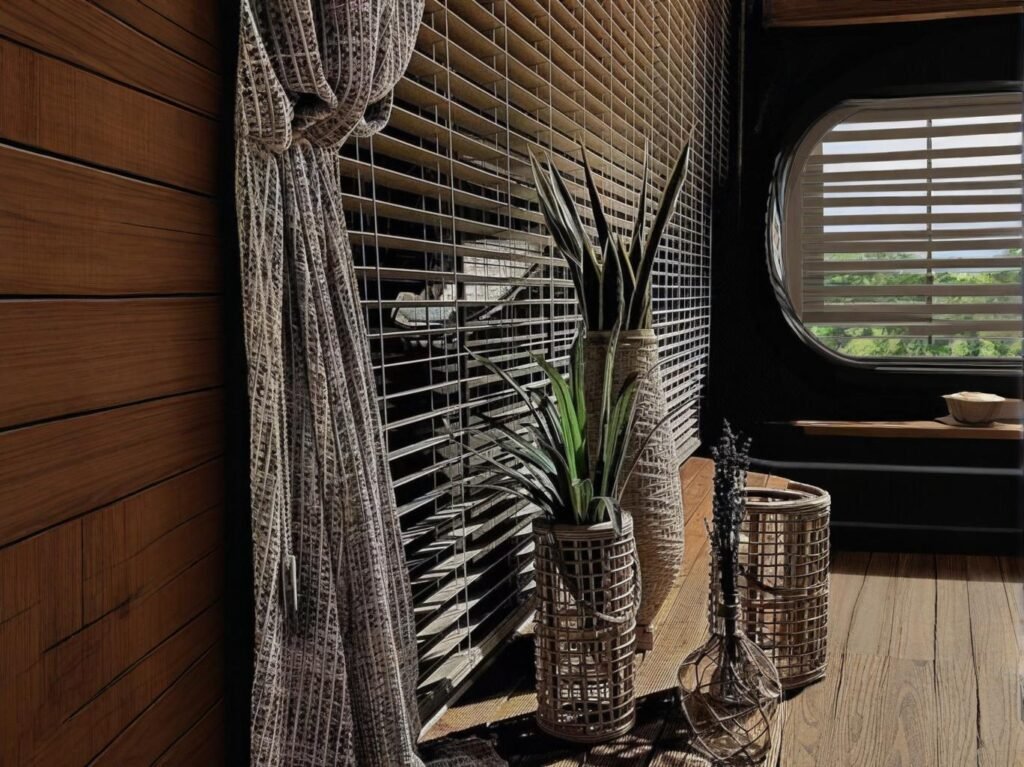
While linen is revered for its breathability, tactile character, and natural sheen, it also poses unique quality control challenges due to its biological variability. Flax fibers, unlike synthetic filaments, exhibit inconsistencies in length, fineness, and resilience, which can magnify throughout spinning, weaving, and finishing.
For global wholesale buyers, quality failures aren’t just a matter of aesthetics—they result in production losses, retail complaints, and brand risk. A recent 2024 survey by Global Sourcing Monitor revealed that up to 14.2% of rejected fabric rolls in linen production are due to preventable defects.
Tackling Quality at Each Stage of Linen Sourcing
A. Most Frequent Linen Fabric Defects
| Defect Type | Primary Cause | Commercial Impact |
|---|---|---|
| Yarn Irregularity | Inconsistent retting, poor spinning | Irregular texture, unwanted slubs |
| Color Variation | Batch dyeing inconsistency, dye migration | Visible mismatch between panels/garments |
| Shrinkage | Lack of heat setting, poor pre-treatment | Garment deformation, high return rate |
| Weft Skewing | Loom tension issues, imprecise batching | Distorted grainline, poor sewability |
| Surface Odor/Residue | Incomplete enzymatic or chemical washing | Consumer perception damage, off-gassing in packaging |
Industry Note: According to OEKO-TEX® Lab Test Reports 2023, over 35% of complaints in final linen products stemmed from colorfastness (to light and wash) and dimensional instability—especially in garments above 180 GSM.
B. How to Prevent These Issues Before Shipment
1. Request and Analyze Pre-Production Samples (PP Samples)
Don’t rely on swatches alone. Request full-meter PP samples across the exact finish stage—greige, post-dye, and post-finishing—to assess warp/weft alignment, GSM consistency, and tactile feel under realistic conditions.
Test Recommendations:
- GSM using ASTM D3776
- Thread density with pick/glass counter
- Weave regularity via 10× magnification
2. Demand Internal and Third-Party Lab Reports
Partner mills should routinely provide test results for:
| Parameter | Testing Method | Ideal Standard |
|---|---|---|
| Shrinkage % | ISO 5077 / AATCC 135 | ≤ 3% (apparel-grade) |
| Colorfastness to Wash | ISO 105-C06 | ≥ Grade 4 |
| Tensile Strength | ASTM D5034 (Grab) | ≥ 150N (warp) |
| Pilling Resistance | ISO 12945-2 | Grade 4 or higher |
Tip: Request at least 1 report per 5,000 meters produced or per dye lot. Buyers exporting to the EU should also validate REACH-compliant chemical use in dye/finishing steps.
3. Enforce AQL-Based Final Inspections
Use third-party QC firms (e.g., SGS, Intertek, TUV) to run inspections based on Acceptable Quality Limit (AQL) sampling plans:
| Product Type | Typical AQL Level | Sample Size Code |
|---|---|---|
| Fashion Linen | AQL 1.5 | Code L (per 5000m batch) |
| Home Textiles | AQL 2.5 | Code J |
| Industrial Use | AQL 4.0 | Code M |
Include visual inspection plus test-on-site for GSM deviation, color match under D65 light, and stitch distortion after steam press.
4. Lock QC Tolerances in Contracts
Add clear, enforceable tolerances in POs or tech packs, such as:
- 🔹 Color delta (∆E): ≤ 1.0 between batch and reference (CIE Lab)
- 🔹 GSM deviation: ±5% from approved sample
- 🔹 Width tolerance: ±0.5 inches (apparel), ±1.0 inches (upholstery)
- 🔹 Shrinkage: < 3% (domestic wash) or < 2% (commercial wash)
If possible, contractually tie final payment to pass/fail criteria per these tolerances.
C. Case Study: Quality Turnaround in Scandinavian Market
Client: Organic children’s wear brand based in Stockholm, Sweden Problem: After scaling up linen romper production with a new Indian mill in 2023, the brand reported:
- 12% return rate due to garment shrinkage exceeding 4.5%
- Over 1800 units rejected by EU retailers under private label QC audits
Solution:
- Switched to a Lithuanian OEKO-TEX Standard 100 & GOTS-certified mill
- Implemented enzyme pre-washing + heat setting at 180°C
- Added tensile strength and shrinkage testing into every dye batch
- Negotiated real-time QC video audits for final batch release
Result Highlights:
| KPI | Before | After Process Upgrade | Delta |
|---|---|---|---|
| Return Rate | 12.2% | 1.4% | ↓ –88.5% |
| Shrinkage Variance | ±4.6% | ±1.9% | ↓ –58.7% |
| Reorder Frequency | 2× / year | 4× / year | ↑ +100% |
| Retailer Scorecard (Avg.) | 3.7 / 5 | 4.9 / 5 | ↑ +1.2 pts |
Brand COO Quote:
“We stopped accepting ‘linen is always inconsistent’ as an excuse. With the right mill, shrinkage is controllable, and our returns dropped to nearly zero in under 6 months.”
How to Work with SzoneierFabrics for Custom Linen Sourcing That Balances Quality, Speed, and Flexibility?
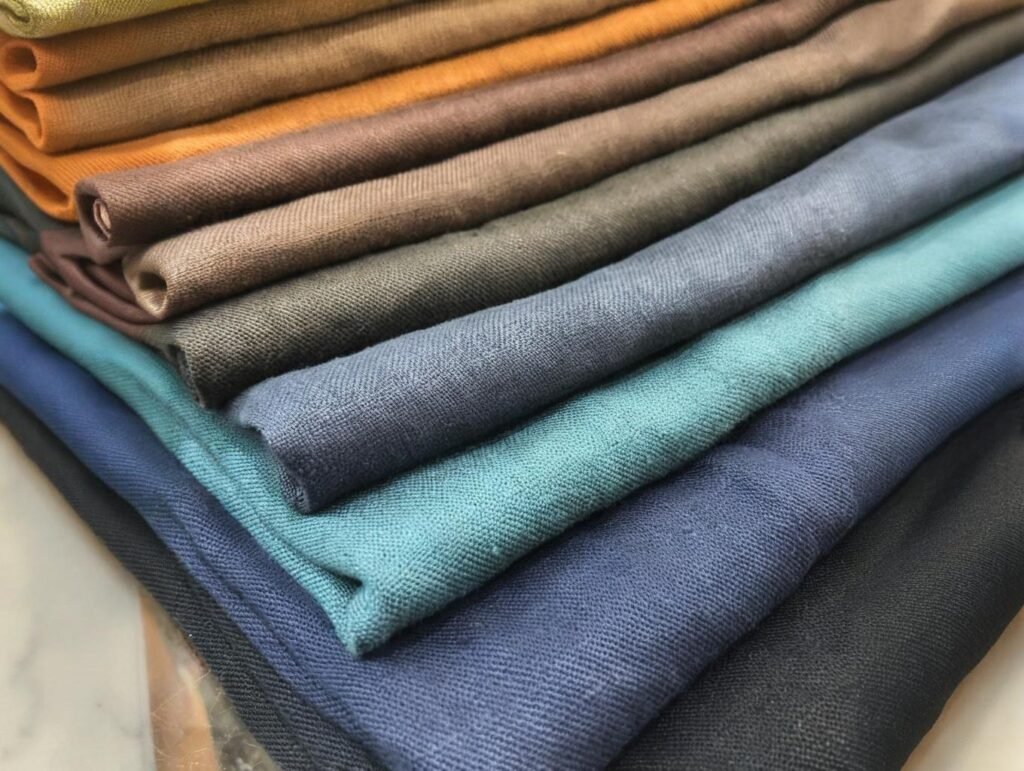
In a global sourcing landscape defined by unpredictable freight timelines and rising quality demands, SzoneierFabrics stands out by combining textile R&D precision with supply chain agility. With over 18 years of manufacturing and OEM/ODM experience, our linen sourcing program is built for serious buyers who value technical customization, low-MOQ prototyping, and proactive quality control.
Whether you’re a startup launching a limited-edition capsule or a premium brand optimizing sustainability KPIs, our model supports fast market entry, consistent quality, and transparent communication. SzoneierFabrics offers custom-woven linen from 100 meters MOQ, with support for GSM control, color matching, chemical-free finishing, and just-in-time shipping—backed by bilingual technical advisors and real-time QC tracking.
What Makes SzoneierFabrics a Preferred Linen Supplier?
A. Customization Capabilities That Meet Brand-Level Demands
| Customization Parameter | Available Options & Notes |
|---|---|
| Weight Range (GSM) | 120–400 GSM (±3% tolerance), customizable by weave density |
| Color Matching | Pantone TPX/TCX, GOTS-certified natural dye, reactive/pigment dye with ∆E < 1.2 |
| Finish Options | Enzyme washed, pre-shrunk, sand-wash, calendaring, anti-bacterial (Bioguard 5.0) |
| Width Tolerance | Standard 145 cm (57″) to 158 cm (62″), others on request |
| Performance Coatings | Waterproof (TPU), fire-retardant (NFPA 701), oil/stain repellent (Teflon-free) |
| Weave Types | Plain, twill, herringbone, dobby jacquard, yarn-dyed options available |
Typical Use Cases:
- 130 GSM – lightweight shirts, summer wear
- 160–200 GSM – dresses, casual suiting
- 250–350 GSM – home décor, table linen
- 400 GSM – structured jackets, upholstery
All custom specs include in-house lab data sheets covering GSM, shrinkage, tensile strength, and pilling.
B. Agile Order & Delivery Workflow for Global Buyers
We remove friction from sourcing by integrating sampling, development, QC, and shipping into one responsive pipeline. Below is a typical order lifecycle:
1. Free Technical Consultation + Sample Dispatch (2–3 Days)
Our textile advisors (available in English, French, and Mandarin) consult on GSM targets, end-use, and sustainability goals. Swatches or lab samples shipped via DHL/FEDEX with full product tags and COAs.
2. Custom Development Phase (7–10 Days)
Includes lab dips, strike-offs, and 1–3 meter PP sample rolls. Pantone matching under D65 light; shrinkage pre-treatment testing included.
3. Production + Quality Control (3–5 Weeks)
- MOQ starts at 100 meters per color
- Full QC system including GSM rechecking, colorfastness, warp/weft alignment
- Inspection photos, videos, and test reports sent before shipment approval
4. Global Freight & Export Documentation (7–18 Days)
- Air freight for urgent batches: 7–10 days
- Sea freight for bulk: 18–22 days
- Export support includes CO (Certificate of Origin), BL, Packing List, and REACH compliance if required
Logistics Partners: UPS Supply Chain, SF International, Maersk Line Packaging options: rolled with interleaf, bale-wrapped, or eco-carton-packed
C. Embedded Technical and After-Sales Support
Beyond fabric, we act as an extension of your sourcing or design team, especially for private label clients.
- Fiber and Finishing Advisory: Recommendations on weave structures, crease resistance, drape quality, and moisture regain (MR %).
- Inventory Holding & Call-Off Service: For recurring orders, we can hold up to 1,000 meters/sku for call-off within 3 months at no extra charge.
- Multilingual Sales & Engineering Support: Seamless communication across time zones for Europe, North America, Asia.
Tech tip: Our in-house engineers routinely assist with fitting linen to pattern grades or suggesting fabric relax time for batch production efficiency.
D. Case Highlight: Enabling Small-Batch Success in Ethical Fashion
Client Profile: A Toronto-based fashion startup focused on slow fashion and small-batch, natural-fiber garments.
Challenge: Needed 250 meters of oatmeal-colored, enzyme-washed linen for a 5-style capsule launch. Other vendors demanded 1,000m MOQ or 10+ week lead times.
Solution:
- SzoneierFabrics offered custom dyeing and sand-wash finishing with GSM control at ±3%
- Delivered PP sample within 9 days, full order completed in 26 calendar days
- Included fiber origin certification (Belgian flax), and test reports for marketing material
Result:
| Metric | Before | After Szoneier Support |
|---|---|---|
| Time-to-Market | ~80 days | 38 days |
| MOQ Limitation | 1,000 m | 250 m |
| Marketing Claims | None | Certified eco-finishing, EU flax origin |
| Repeat Order Cycle | — | 4× per year since 2024 |
Client Testimonial:
“Other suppliers saw us as too small. Szoneier saw our vision and made it real. Their sampling speed and quality control were game-changing.”
Work with a Partner, Not Just a Mill
At SzoneierFabrics, we treat linen not just as a product, but as a platform for brand storytelling, compliance, and creative freedom. Our hybrid structure (design, weaving, finishing, export under one roof) ensures you don’t chase 5 vendors for 1 fabric.
Ready to Source Your Custom Linen with Confidence?
Whether you’re developing eco-friendly apparel, high-performance upholstery, or specialty home goods, your linen fabric source matters. From understanding country capabilities to mastering logistics, sustainability, and QC controls—you now have a complete roadmap.
SzoneierFabrics is here to support you with low-MOQ custom linen sourcing, expert guidance, and global shipping. Let us turn your vision into beautiful, functional textile reality.
Want free swatches or to discuss a pilot batch? Email info@szoneierfabrics.com or call (+86) 13823134897. Let’s bring your fabric idea to life—with quality, speed, and partnership.
